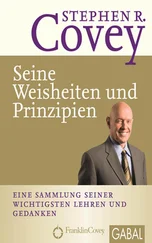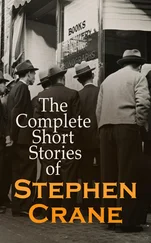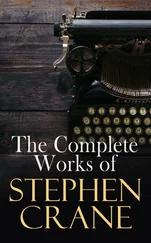High on a mound half a mile away stands Stouts Hill School, a dashing castle of knapped flint, all turrets and arrow-slits and skirted by a dragon-fly flicking, carp-snapping, mallow-flaming lake. The lane from Stouts Hill to the village winds steeply down to the Dursley road. There is horse shit there, dropped in caramac-coloured lumps by warm-sided bay mares ridden by gymkhana-jolly girls who blush fiercely when they meet your eye.
There is horse shit there all right.
In the village of Uley nought-percent-financed Daewoos lurk behind remotely controlled carport doors, satellite dishes glitter from the roofs, copal varnished slices of barked Do-It-All elmwood proclaim Mulberry Lodge, South Fork and El Adobe. A blackboard outside the village pub vibrates in three-coloured chalk with the promise of Happy Hour, pool, premium guest beers and big screen satellite TV. The smell of stale lager and Doritos leaks up the main street to the church, where laserprinted A 4pages flap announcements from the chancel wall promising car boot sales and outreach fellowship retreats in Wales. Lard-arsed fatties in Russell Athletic sweatshirts swap Sensual Love Guide CD-ROMs with their neighbours as their Nike-ticked kids line up burger cartons on the barbecue patio and zap them with turbo-boosted water guns. The girls smear blusher on their cheeks and poke their tongues out fiercely when they meet your eye. Stouts Hill the school has closed now, to be replaced by Stouts Hill the time-share holiday home.
Well, maybe it’s not so bad. Somewhere between warm gloop and cold water is the tepid truth about the village of Uley, which gets on with life as charmingly as it can. There was a time when the very Mansion furniture wax, dividend tea and gymkhana girls of sentimental memory were themselves modern and noisomely resented intrusions; books will one day be written that recall CD-ROMs and Russell Athletic sweatshirts in a nostalgic melancholy haze as fervent and foolish as any.
We will cut, just for a moment, to London. These days I have a flat in St James’s, that elegant parcel of metropolitan clubland bordered by Piccadilly, Pall Mall, St James’s Street and Lower Regent Street. It suits, I suppose, my self-image – or rather that image of me others have that I often weak-mindedly allow to become my self-image – ‘to live in St James’s. St James’s has long been the natural habitat of the upper class English bachelor. Here he may browse for shirts and ties in Jermyn Street, for hats and shoes in Lock’s and Lobb’s, for foodstuffs in Fortnum’s, for literature in Hatchards and the London Library, and for company m Brooks’s, White’s, Boodle’s, Buck’s or (if tragically pushed) in the improbably named East India, Devonshire, Sports and Public School’s Club where the best school curry in all London can be found, served with sultanas and slices of banana, washed down with lukewarm London tap water poured into stout little Duralex glasses. I have lived in St James’s for the last five years, not a proper English upper class bachelor at all, but tired of Islington, the proper home for people like me, and never at ease west of Hyde Park Corner or south of the Strand.
From my window I can see the clock face of
Christopher Wren’s handsome church of St James. Behind it – the other side of Piccadilly – Sackville Street leads up to Savile Row and the great Nash curve of Regent Street. In the year 1961 my parents visited Sackville Street, examining each doorway in turn until they came upon a brass plaque on which was written:
GABBITAS amp; THRING
SCHOLASTIC AGENCY
In the year 1977 I too visited Sackville Street, looking for the brass plaque that still said:
GABBITAS amp; THRING
SCHOLASTIC AGENCY
I don’t suppose that any writer will ever be able to come up with a partnership that quite matches the ludicrous perfection of the names Gabbitas and Thring.
What is a Scholastic Agency?
Oh, tish now, and come, come, come…, you know perfectly well.
A scholastic agency is a kind of public and prep school dating agency. It acts as a private sector pimp, procuring staff for short-handed schools, placement for jobless teachers and schools for parents at a loss to know where their little ones might thrive. That second service was of interest to me in 1977, and the third to my mother and father in 1961.
They wanted to find a prep school for my brother Roger and for me. I was four years old then and Roger well on his way to six. Today of course, what with the establishment of social equality, the smashing of the class system and the achievements of a Nation More At Ease With Itself, by the time your offspring have reached four and five it is far too late to be looking for schools: demand for private education is so high that children must be put down for admission not at birth but in utero, ideally before their first cells have divided.
There may be some reading this who are hazy (and proudly so) about the precise meanings of ‘prep school’ and ‘public school’.
A prep school is an establishment designed, as the name implies, untypically for a British institution, to prepare a child. In this instance the preparation is for public school. Public school, as the name decidedly does not imply, very typically for a British institution, is wholly private. Public schools undertake to guide, mould and instruct pupils aged between thirteen and eighteen. Prep schools accept their intake from somewhere in the region of eight, nine or ten years old, and prepare them for the Common Entrance Examination, a test recognised by all the public schools. Different public schools are satisfied by different CE results. Thus Winchester, which has an interest in only the cleverest boys, would expect CE marks way above seventy per cent, while Malvern and Worksop and Monckton Combe by way of example, might be content with percentages in the nether fifties or upper forties. There is, it follows, no absolute pass mark in the Common Entrance. Public Schools can decide whom they ‘take according to their need to have a fully pupilled and profitable school roll, according to their own sense of academic reputation, according to a candidate’s athletic, musical or artistic qualities, or according to his status as offspring of an old boy or a Great, Rich and Desirable Parent.
At the time of my infancy, the early 1960s, nearly all prep and public schools were single-sex boarding schools. Today, girls are involved to a much greater degree, sometimes only in the Sixth Form, sometimes all the way through. Parents are more reluctant to pack their children off early and may choose to have them attend as day pupils or weekly boarders. Headmasters are younger than they were and more likely to be married. Parents expect more say in the running of a school, to attend more PTA meetings and to complain more vocally about living conditions, discipline and the curriculum. Heating, diet, facilities, syllabus and discipline seem far less Spartan now than they were twenty years ago. But these changes aside, the system, so far as I have been able to ascertain, is much as it was.
It is common enough, all things being equal, for a father to send his sons to the prep school he attended as a boy himself. My father, however, had been a chorister at St Paul’s Cathedral and attended its choir school. My brother and I were unlikely to follow in his footsteps. The sound of Roger and Stephen Fry singing, even before Dame Nature had her impertinent pubic way with us, could cause people to stab themselves in the throat with sharpened pencils, jump from high windows, claw out their own inner ears, electrocute their genitals, put on a Jim Reeves record, throw themselves cackling hysterically into the path of moving buses… anything, anything to take away the pain. The cathedral choir school of St Paul’s with its fussy, outworn emphasis on tunefulness and harmony was never going to be an option. Hence Gabbitas and Thing.
Читать дальше










